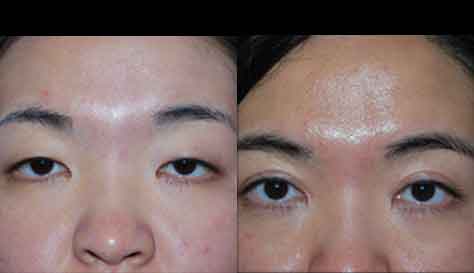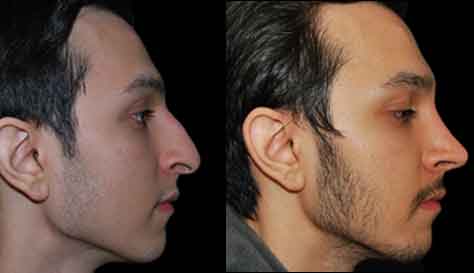Ethnic Rhinoplasty
Conveniently located to serve the areas of New Jersey and New York
Contents
- 1 The Art of Rhinoplasty
- 2 What Is Ethnic Rhinoplasty?
- 3 Why Undergo Ethnic Rhinoplasty?
- 4 Choose A Rhinoplasty Specialist
- 5 FAQ
- 5.1 What do I need to avoid before surgery?
- 5.2 What about my daily medications before surgery?
- 5.3 What happens after surgery?
- 5.4 Are there any dietary restrictions following surgery?
- 5.5 When will my stitches be taken out?
- 5.6 How soon will I be able to exercise?
- 5.7 When will I be able to see the results?
- 5.8 What is special about the way Dr. Ovchinsky does the surgery?
The Art of Rhinoplasty

What makes the art of rhinoplasty challenging and at the same time exciting is the fact that there are no two noses that are the same. Every nose has its own intricacies, nuances, specifics the same way every patient has his or her own likes and dislikes. Therefore, it goes without saying that there are vast differences in nasal anatomy among patients of various ethnicities. These differences in anatomy as well as in patients’ ethnic views of an “ideal” nose dictate different rhinoplasty approaches and techniques.
What Is Ethnic Rhinoplasty?
So, what is Ethnic Rhinoplasty? Ethnic Rhinoplasty refers to rhinoplasty surgery performed on patients of ethnicity. In our busy rhinoplasty practice we commonly see patients of the various descent including but not limited to:
- African American
- Latino/ Hispanic
- Asian
- Mediterranean/ Middle Eastern
Why Undergo Ethnic Rhinoplasty?
Most ethnic rhinoplasty patients are looking to improve upon their noses but still preserve their ethnic identity. They typically do not want a fully westernized look, but they do want an improved nasal appearance that is in harmony with the rest of their facial features. Rhinoplasty in ethnic patients often requires a different approach than in Caucasian patients. While individuals vary dramatically, there are some characteristics common to the different ethnicities that can make rhinoplasty more challenging and these must be addressed and taken into account in order to achieve an optimal result.
- Thicker nasal skin (especially in African American noses)
- Weak tip cartilages (especially in African American noses)
- Dorsal hump that needs removal (Hispanic and Middle Eastern noses)
- Low flat dorsum that needs raising and definition (African American and Asian noses)
- Narrowing a wide appearance or broad base (African American and Asian noses)
- Adding more definition to a bulbous tip
- Raising a drooping tip
- Improving large or flared nostrils (African American noses)
Choose A Rhinoplasty Specialist
Dr. Ovchisnky has a very busy ethnic rhinoplasty practice in New Jersey and New York. We would be delighted to see you at a consultation in our office and to have an opportunity to create the nose you have always dreamed of!
FAQ
What do I need to avoid before surgery?
If you are on “blood thinners,” you will be asked to stop them approximately one week prior to surgery. We also ask that you avoid certain over-the-counter medications. If you are taking some herbal supplements, you should stop those as well as they may contain blood thinning substances. Also, you have to completely quit smoking at least two weeks before surgery.
What about my daily medications before surgery?
You will have a preoperative appointment well in advance of your surgery when we will review all mediations with you. If you are on “blood thinners,” you will be asked to stop them approximately one week prior to surgery. We also ask that you avoid certain over-the-counter medications. You may continue taking most routine medications up until the morning of surgery with a small sip of water.
What happens after surgery?
You will go to the recovery room for a few hours until you are fully recovered from anesthesia. Once you are stable you will be taken home (or to a hotel) by your family member or a friend. You will want to stay relaxed for the first few days. You will need to keep your head elevated when in bed to help with faster resolution of swelling. You should begin to start walking, eating, and using the restroom the day after surgery. Your activity can slowly increase each day but it will take up to 2 weeks before you start to feel like your old self again. You should avoid any strenuous activity for 4 weeks. You will need to take medication prescribed to you by Dr. Ovchinsky, which usually include antibiotics, pain medicine, antibiotic ointment for the incisions, and occasionally anti-nausea medications.
Are there any dietary restrictions following surgery?
No. Patients can eat whatever they want. Advance your diet from liquids (fruit juice, milk shake, etc.) to soft food (pudding, macaroni and cheese, mashed potatoes and gravy, oatmeal, pasta) to solids as tolerated. To prevent dehydration, please drink as much juices and nutritional fluid as possible.
When will my stitches be taken out?
Stitches are normally removed five to six days after your surgery.
How soon will I be able to exercise?
Dr. Ovchinsky recommends that patients do not return to exercise for three weeks after their procedure.
When will I be able to see the results?
You may see the difference right away, and more so once the swelling goes down within the first one to two weeks. As with any surgical procedure, it takes anywhere from 6 to 12 months for the results to become final.
What is special about the way Dr. Ovchinsky does the surgery?
Dr. Ovchinsky tailors his surgical technique to an individual patient rather than using the same “run of the mill” surgery on everybody. The technique he uses causes minimal pain, has natural results, and is long-lasting. The vast majority of patients are quite surprised afterward at how little discomfort they have and how quickly they return to normal activity. Most patients have minimal bruising. Finally, with Dr. Ovchinsky technique and attention to details during skin closure, scars are typically minimal and are often difficult to see once they have fully matured.





